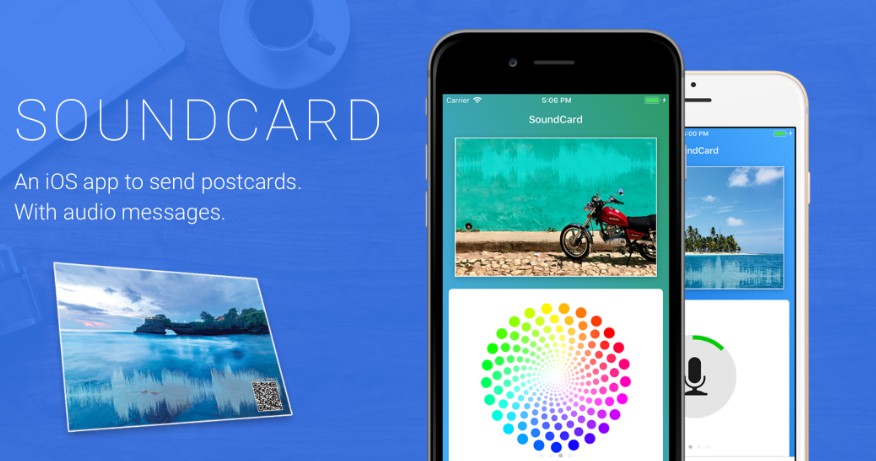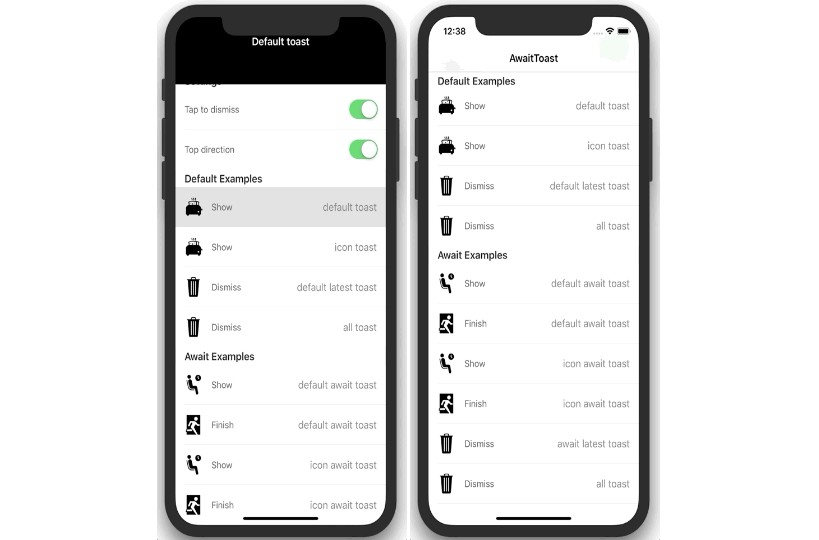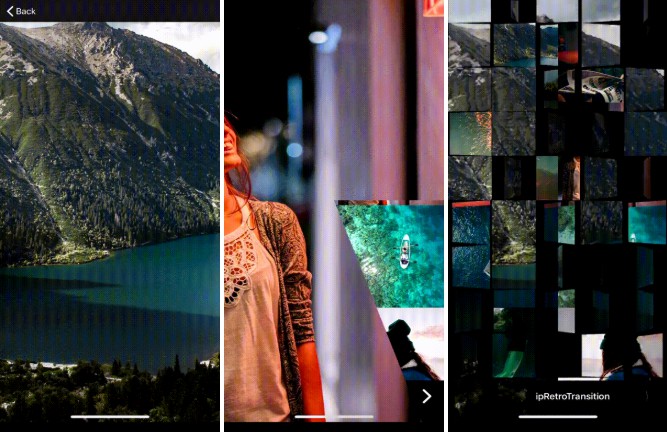DSWaveformImage
DSWaveformImage offers a few interfaces with the main purpose of drawing the envelope waveform of audio files in iOS. To do so, you can use WaveformImageDrawer, WaveformImageView or an extension on UIImage.
Additionally, you can get a waveform's (normalized) samples directly as well by creating an instance of Waveform.
More related iOS Controls
You may also find the following iOS controls written in Swift interesting:
- SwiftColorWheel - a delightful color picker
- QRCode - a customizable QR code generator
Installation
- use carthage:
github "dmrschmidt/DSWaveformImage" ~> 5.0 - use cocoapods:
pod 'DSWaveformImage', '~> 5.0' - or add the DSWaveformImage folder directly into your project.
Usage
To create a UIImage using WaveformImageDrawer:
let waveformImageDrawer = WaveformImageDrawer()
let audioURL = Bundle.main.url(forResource: "example_sound", withExtension: "m4a")!
let topWaveformImage = waveformImageDrawer.waveformImage(fromAudioAt: audioURL,
size: UIScreen.main.bounds.size,
color: UIColor.black,
backgroundColor: UIColor.black,
style: .filled,
position: .top,
scale: UIScreen.main.scale)
To create a UIImage using a UIImage extension:
let audioURL = Bundle.main.url(forResource: "example_sound", withExtension: "m4a")!
let waveform = Waveform(audioAssetURL: audioURL)!
let configuration = WaveformConfiguration(size: UIScreen.main.bounds.size,
color: UIColor.blue,
style: .striped,
position: .middle,
scale: UIScreen.main.scale,
paddingFactor: 4.0)
let waveformImage = UIImage(waveform: waveform, configuration: configuration)
To create a WaveformImageView (UIImageView subclass):
let audioURL = Bundle.main.url(forResource: "example_sound", withExtension: "m4a")!
waveformImageView = WaveformImageView(frame: CGRect(x: 0, y: 0, width: 500, height: 300)
waveformImageView.waveformAudioURL = audioURL
And finally, to get an audio file's waveform samples:
let audioURL = Bundle.main.url(forResource: "example_sound", withExtension: "m4a")!
let waveform = Waveform(audioAssetURL: audioURL)!
print("so many samples: \(waveform.samples(count: 200))")
From a background thread
WaveformImageDrawer and the UIImage extension can be used on a background thread.
For WaveformImageView this is currently not yet supported and it will always
do the computations and drawing on the main thread.
To use a background thread, simply use GCD. Using the UIImage extension is
analogous to this example:
DispatchQueue.global(qos: .userInitiated).async {
let waveformImage = waveformImageDrawer.waveformImage(from: waveform, with: configuration)
DispatchQueue.main.async {
yourImageView.image = waveformImage
}
}
What it looks like
Waveforms can be rendered in 3 different styles: .filled, .gradient and
.striped. Similarly, there are 3 positions .top, .middle and .bottom
- relative to the canvas. The effect of each of those can be seen here:





